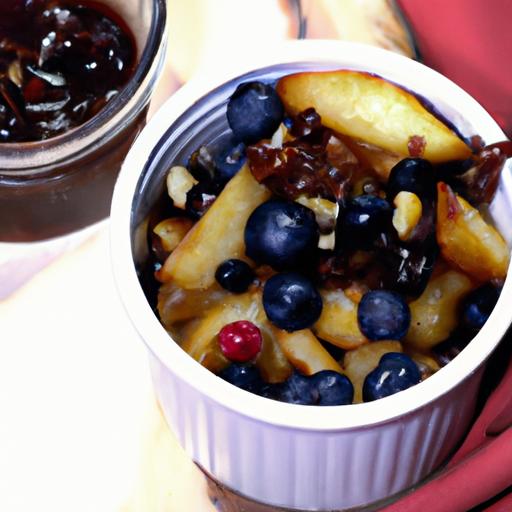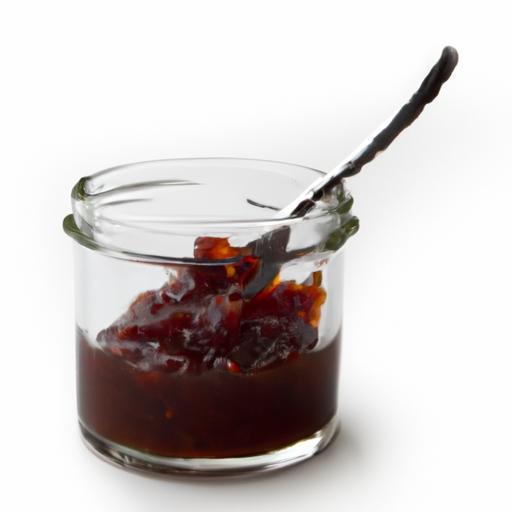There’s an art to making jam that transcends just fruit and heat-it’s a delicate dance where sugar takes center stage. Sweet Success: Choosing the Best Sugar for Perfect Jam explores the unsung hero behind every luscious spread. Whether you crave the classic clarity of white sugar or the rich depths of muscovado, the type of sugar you choose can make or break your batch. Join us as we unravel the sweet science and subtle nuances, ensuring your next jar of jam is nothing short of perfection.
Sweet Success: Choosing the Best Sugar for Perfect Jam begins with understanding how your choice of sugar transforms the flavor, texture, and overall character of your jam. Whether crafting a berry preserve inspired by sun-ripened fields or a rich stone fruit conserve with a hint of citrus, selecting the right sugar unlocks a harmonious balance of sweetness and structure that elevates homemade jam to an art form.
Prep and Cook Time
- Preparation: 15 minutes
- Cooking: 25-35 minutes
- Total Time: 40-50 minutes
Yield
Approximately 4 half-pint (240 ml) jars of jam
Difficulty Level
Medium – Ideal for jam makers with basic experience looking to refine their craft
Ingredients
- 4 cups fresh fruit (such as strawberries, raspberries, or peaches), hulled and diced
- 3 cups sugar (choose your preferred variety: granulated, cane, or natural alternative)
- 2 tablespoons lemon juice (freshly squeezed for natural pectin activation)
- ½ teaspoon fruit pectin (optional, depending on fruit and sugar choice)
- 1 teaspoon vanilla bean paste (optional, to enhance flavor depth)
Instructions
- Combine fruit and lemon juice in a heavy-bottomed saucepan over medium heat. Gently mash the fruit with a wooden spoon to release natural juices. Let the mixture simmer for 5 minutes, stirring occasionally.
- Add the sugar gradually, stirring constantly to dissolve it completely. This step is crucial to prevent graininess in the final jam.
- Increase the heat to medium-high, bringing the mixture to a rolling boil. Stir frequently to avoid burning, especially if using natural sugars that brown more easily.
- Cook the jam until it thickens, about 20-30 minutes. Test for gel by dripping a spoonful onto a cold plate; if it wrinkles when pushed, it’s ready.
- If using pectin, stir it in 5 minutes before the end of cooking, according to package instructions, to enhance firmness without compromising flavor.
- Remove from heat and stir in vanilla bean paste for a luxurious finishing touch.
- Ladle the hot jam into sterilized jars, leaving a ¼-inch headspace. Wipe rims clean, seal, and process in a boiling water bath for 10 minutes to preserve freshness.
Tips for Success
- Understanding Sugar Types: Granulated white sugar offers classic sweetness and clarity. Cane sugar imparts a subtle molasses undertone and deeper color, boosting complexity. Natural alternatives like coconut sugar or honey can enhance flavor but may alter texture-adjust cooking times accordingly.
- Measuring Precise Sugar: Always use a dry measuring cup for sugar and level off for accuracy. This consistency is key to achieving the expected set and flavor balance.
- Balancing Health and Taste: Consider reducing sugar by up to 10-15% with fruit high in natural pectin (e.g., crabapples), or substitute part of the sugar with erythritol or stevia blends suitable for cooking-test in small batches first.
- Prevent Crystallization: Add a splash of lemon juice or a pinch of cream of tartar to interfere with sugar crystal formation, ensuring your jam stays silky smooth.
- Make Ahead: Jam improves in flavor after 24 hours of resting. Refrigerate opened jars promptly and consume within 3 weeks for optimal freshness.
Serving Suggestions
Serve your beautifully crafted jam atop warm buttered toast, dolloped on vanilla Greek yogurt, or swirled into morning oatmeal for a naturally sweet boost. Garnish with fresh mint sprigs or a zest of lemon for bursts of color and brightness. For a sophisticated touch, pair with a cheese platter featuring creamy brie or sharp cheddar.
| Nutritional Info (per 2 tbsp) | Calories | Protein | Carbs | Fat |
|---|---|---|---|---|
| Granulated Sugar Jam | 55 | 0 g | 14 g | 0 g |
| Cane Sugar Jam | 57 | 0 g | 15 g | 0 g |
| Honey-Sweetened Jam | 60 | 0 g | 17 g | 0 g |

For deeper insights on natural pectin-rich fruits, visit British Nutrition Foundation, and explore our article on Mastering Homemade Pectin for Jam to add expertise to your preserves.
Q&A
Q&A: Sweet Success – Choosing the Best Sugar for Perfect Jam
Q1: Why does the type of sugar matter when making jam?
A1: Sugar isn’t just about sweetness in jam; it plays starring roles in texture, preservation, and even color. The right sugar helps your jam set to a luscious, spreadable consistency while preventing spoilage and encouraging that inviting, jewel-like gloss.
Q2: Can I use any sugar for jam, or should I pick a specific one?
A2: While many sugars can sweeten jam, each type lends unique qualities. Granulated white sugar is the classic choice for reliable setting and pure sweetness. But if you want depth, try turbinado or cane sugar for a hint of molasses flavor. Just remember, darker sugars might alter color and set.
Q3: What about natural sweeteners like honey or maple syrup-are they good for jam?
A3: Natural sweeteners like honey and maple syrup add delightful flavors but can affect the jam’s ability to gel due to differing sugar compositions. They’re best used in combination with regular sugar or in recipes specifically designed to accommodate them, ensuring your jam stays perfectly thick.
Q4: How does sugar quantity affect jam making?
A4: Sugar isn’t just a sweetener-it’s vital for the chemistry of jam. Too little sugar can prevent proper setting and reduce shelf life, while too much may create an overly stiff texture or mask the fruit’s natural flavors. Striking the right balance is key to that perfect spoonful.
Q5: Is low-sugar or no-sugar jam possible?
A5: Absolutely! Modern pectin varieties allow lower-sugar or even sugar-free jams. However, these often require special pectins and sometimes acid adjustments. The texture and taste may differ from traditional jams, but they’re a fantastic option for those watching their sugar intake.
Q6: Any tips for achieving a glossy, spoon-perfect jam?
A6: Beyond choosing the right sugar, ensuring your fruit is ripe, using fresh lemon juice (for acidity), and cooking at the right temperature help. Stir gently and avoid boiling too vigorously to keep clarity. The sugar interacts with pectin and acid to create that beautiful, glossy finish.
Q7: Can I mix sugars to customize flavor and texture?
A7: Yes! Combining sugars-like half white granulated and half brown sugar-can create nuanced flavors and interesting textures. Experimentation can lead to unique signature jams, but keep in mind that mixing affects setting time and color, so test small batches first.
Q8: What’s the secret to sugar crystal-free jam?
A8: Preventing sugar crystals involves proper cooking and stirring techniques. Dissolve sugar thoroughly and avoid stirring once the jam starts boiling vigorously. Adding a bit of lemon juice or a small amount of butter can also inhibit crystallization, keeping your jam silky smooth.
Q9: How does sugar influence jam preservation?
A9: Sugar binds free water in the jam, reducing microbial growth and spoilage. This natural preservative function extends shelf life and maintains safety. Insufficient sugar can lead to runny jam prone to fermentation or mold, so adequate sugar is essential for long-lasting sweet success.
Whether you stick with tried-and-true white sugar or venture into rich molasses-infused territory, understanding sugar’s pivotal role will help your homemade jam reach sweet perfection every time!
To Wrap It Up
As your boiling pot bubbles with fragrant fruit and sugar, remember that the sweet success of your jam hinges on more than just the ripeness of your berries-it’s the harmony of sugar and fruit that creates that perfect, shimmering spread. Whether you opt for classic granulated sugar to keep things straightforward, explore the rich undertones of turbinado, or experiment with pectin-rich options for a firmer set, the choice you make will shape every spoonful. So, armed with this knowledge, go ahead and craft your next batch with confidence-because when it comes to jam, the sweetest victories are made one thoughtful scoop at a time.


